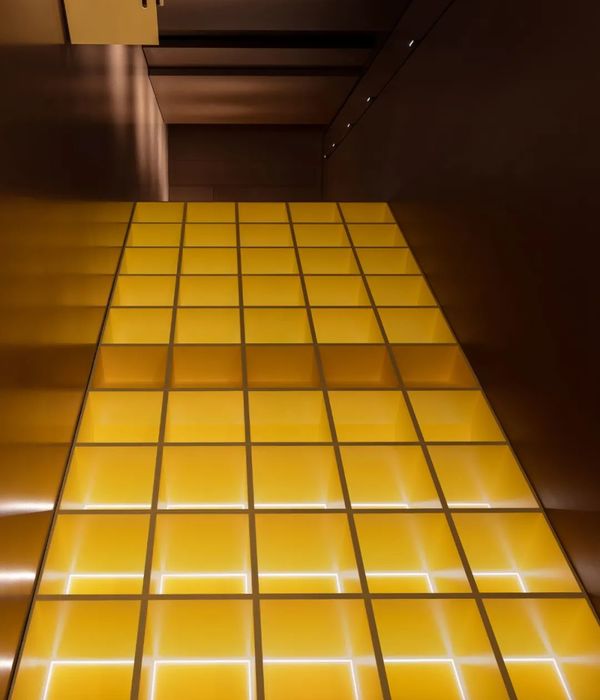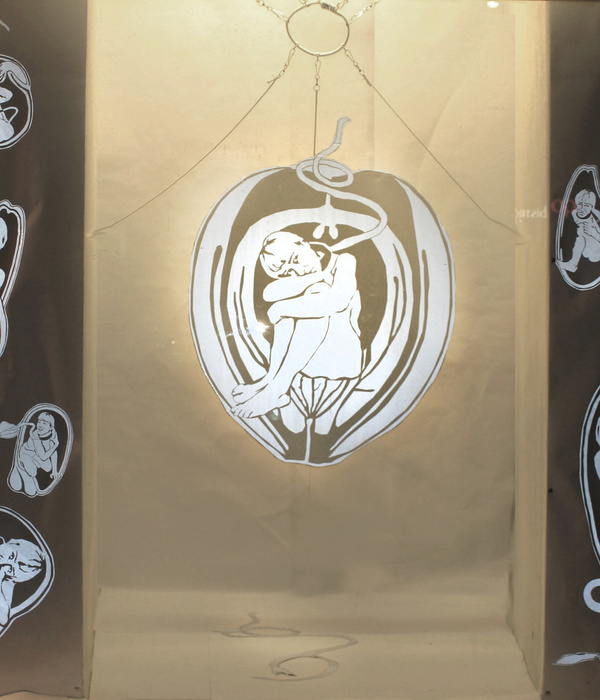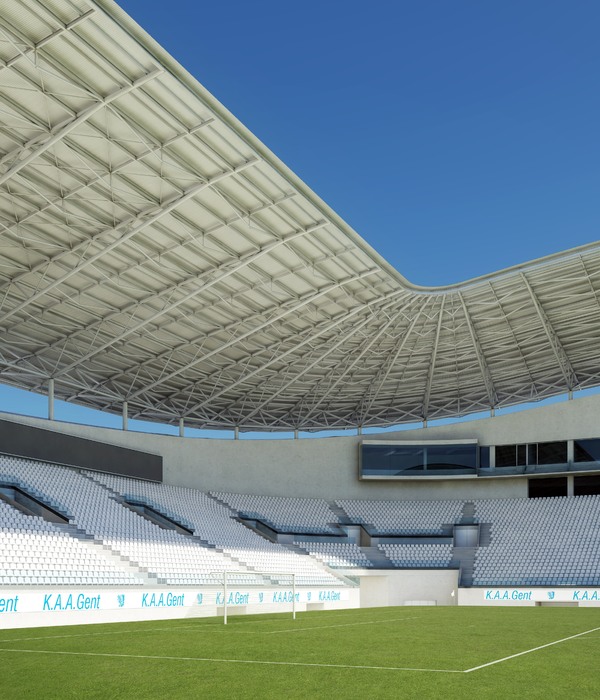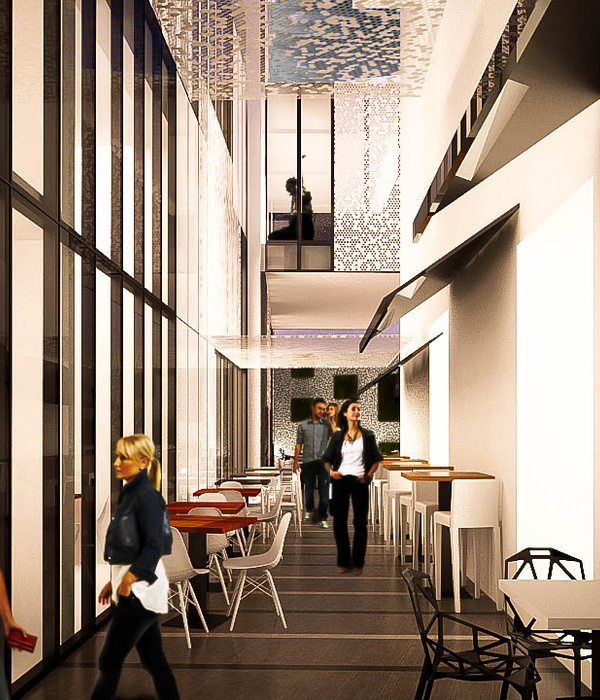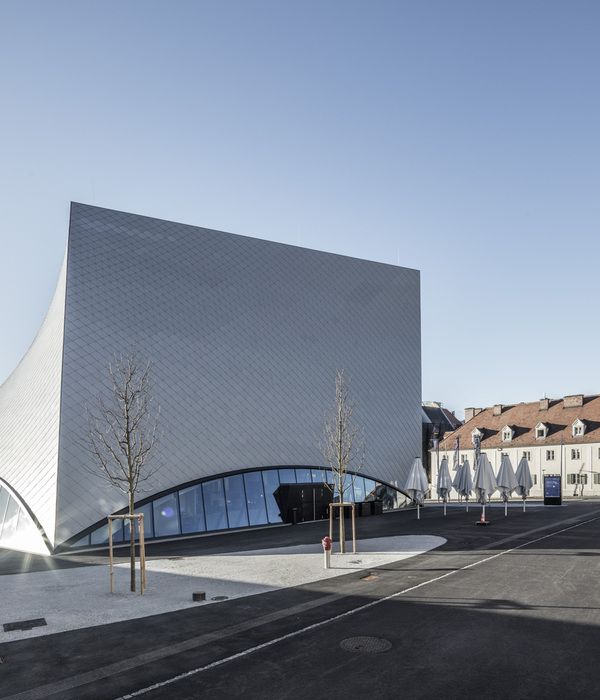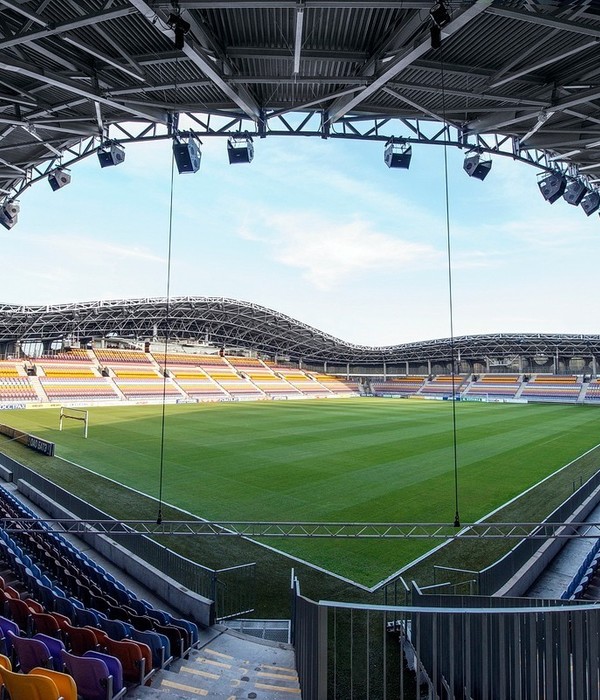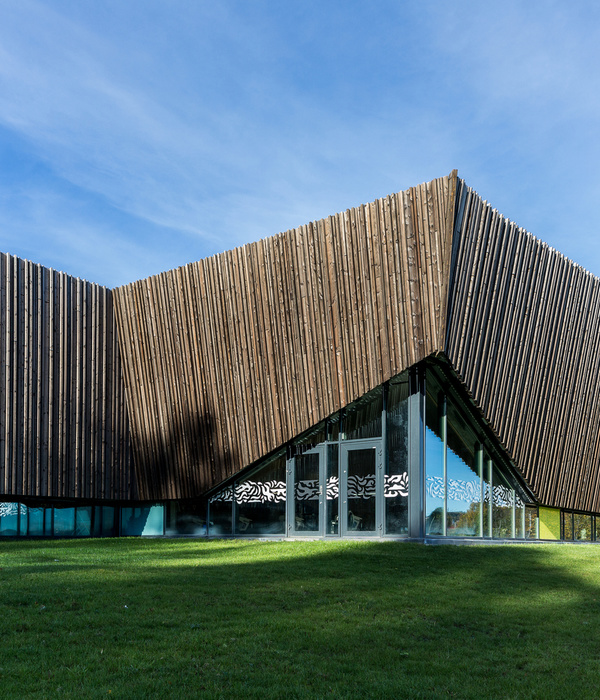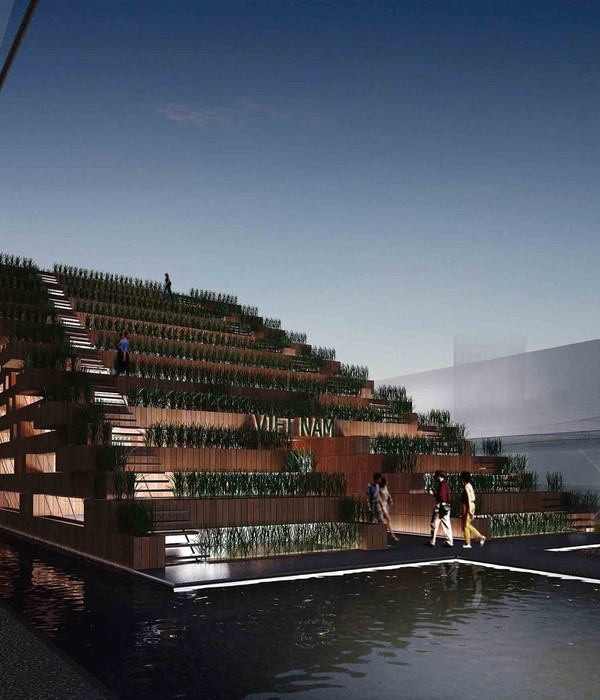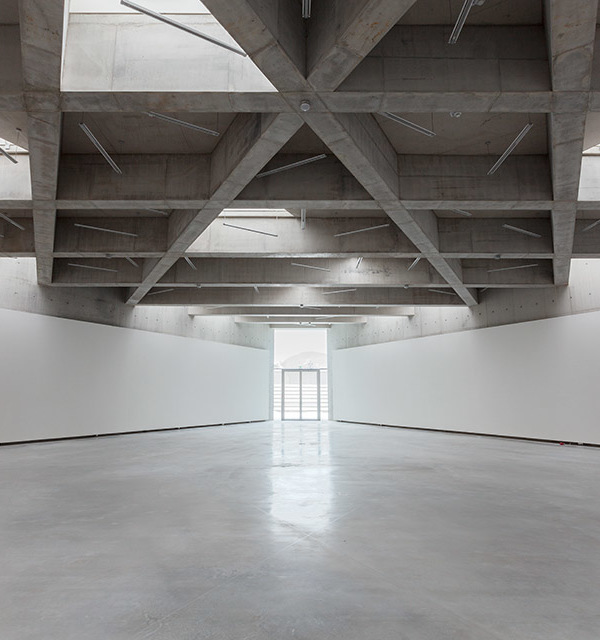来自美国纽约的Thomas Phifer and Partners设计的美国纽约康宁博物馆北翼扩建方案。
建筑在环境敏感性,本身特色以及艺术品的呈现三方面取得动人协调。屋顶天窗上的片状格栅使得进入博物馆的光线温和,保证艺术品的自然照明用光,减少电力消费,一些辅助照明设备帮助补光。建筑外表皮的窗户都是双层中空L-e玻璃,保证博物馆夏凉冬暖。为了更好的保存放置在其中的玻璃艺术品,设计了一个严格的气候控制环境控制湿度和温度,消除尘埃和其它污染物。
baise
The Corning Museum of Glass North Wing will provide a superlative visitor experience in a state of the art, “energy smart” building. Natural lighting, building envelope, and sophisticated temperature and air quality controls provide the ideal interior environment for preserving the Museum’s unparalleled collection of glass art. In these ways, the new Corning Museum of Glass North Wing will maximize the enjoyment and protection of the art within an environmentally sensitive and architecturally distinctive structure:
Daylighting
The gallery has access to natural daylight through the use of diffusing roof skylights, providing the majority of the lighting required to view the art. This allows power consumption levels, associated with the building lighting, to remain well under comparable gallery spaces in other museums. In addition to the natural daylight used to light the gallery, electric track lighting is programmed to complement and spotlight the art by adjusting to changes in exterior natural light levels. Photocells located at the roof of the building work with the electric track lighting controls to blend the daylight and electric light levels and to optimize energy consumption during all hours of operation.
Building Envelope
The building envelope has been carefully tuned both to protect the art and to contribute to the energy performance of the museum. The windows and skylights of the building are all double glazed insulated glass units. The glass also incorporates high performance low-E (low emissivity) coatings which help to keep the heat out during the summer and to keep the heat in during the winter; UV filtering coatings on the glass will also protect the art from damaging ultraviolet rays.
Temperature and Air Quality Controls
In addition to providing public access to view the valuable collection of glass art, the building must also protect this art in a climate controlled environment. To accomplish this important task, Gallery Building’s environmental control systems have been designed to control the interior temperature and humidity while carefully eliminating dust and other polluting agents from the museum environment. Finally, to ensure that the gallery building will operate efficiently and will maintain the critical environmental conditions for which it was designed, a comprehensive commissioning program will be undertaken after the equipment installation is completed. In this commissioning phase, all of the building systems will be carefully tested and measured against the design standards prior to installing the art. The building staff will also be fully trained on the operation and maintenance of the building systems for optimal environmental performance.
MORE:
Thomas phifer and partners
,更多请至:
{{item.text_origin}}

